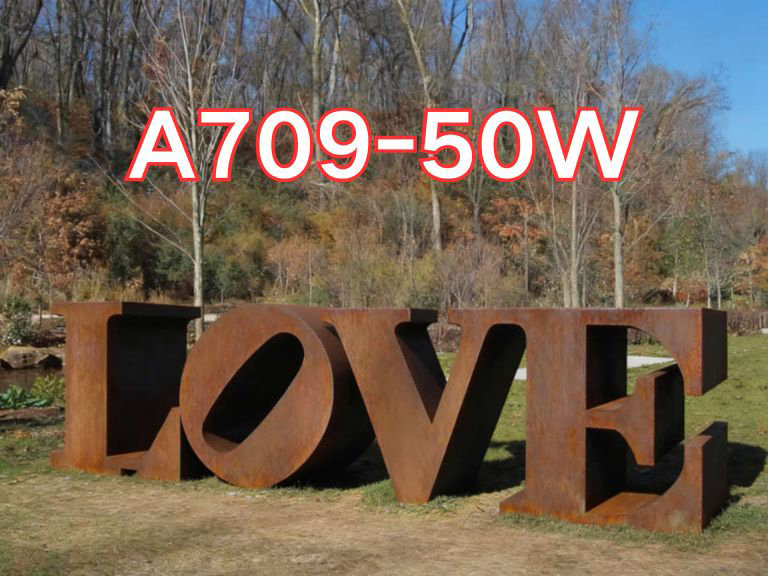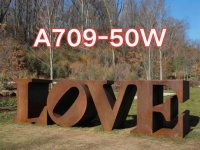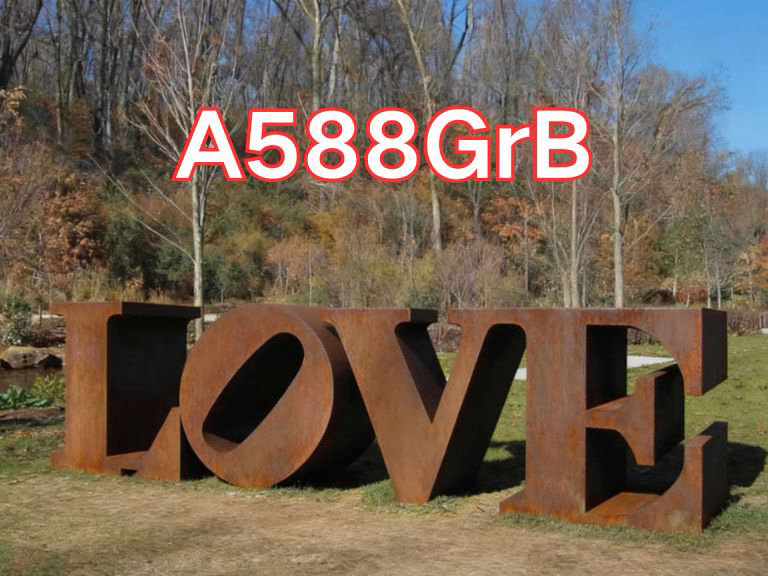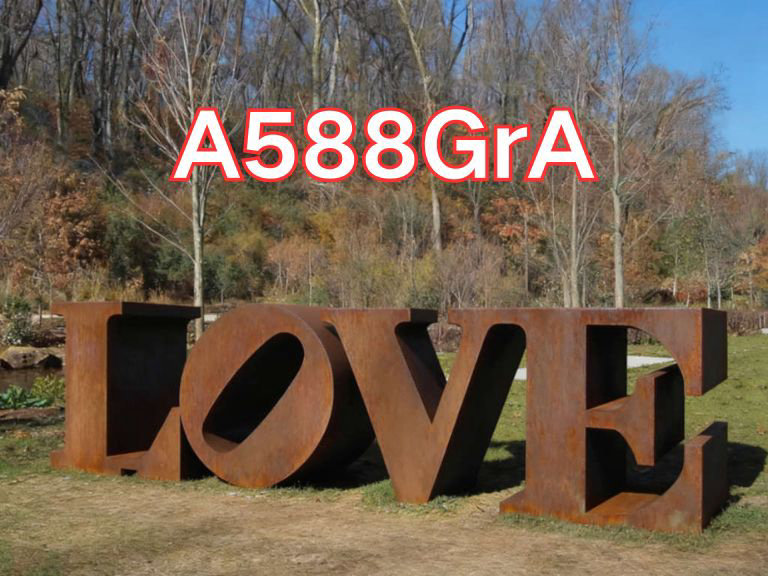

A709-50W
A709-50W is a high-strength, low-alloy weathering structural steel plate, with its designation conforming to the American Society for Testing and Materials (ASTM) standard ASTM A709/A709M. The latest version of this standard is ASTM A709/A709M-23 "Standard Specification for Structural Steel for Bridges", which is the most fundamental technical specification for bridge steels in North America.
The designation "A709-50W" has a clear meaning:
"A709" refers to the ASTM standard number it follows.
"50" indicates the specified minimum yield strength of 50 ksi (thousand pounds per square inch), equivalent to approximately 345 MPa. This strength level is comparable to China's Q355 grade.
"W" stands for "Weathering," clearly identifying its resistance to atmospheric corrosion.
A709-50W steel plates are primarily used in the fabrication of various types of highway and railway bridges. This is their main and most critical application area. They are widely used in key load-bearing components such as bridge decks, main girders, cross beams, trusses, arch ribs, and bridge towers. Due to their excellent weathering resistance, they are particularly suitable for bridge projects where reducing or eliminating the need for subsequent paint maintenance is desired. Additionally, thanks to their good overall performance, this steel is also commonly used in other large outdoor steel structures requiring high strength and corrosion resistance, such as traffic sign supports, transmission towers, open-air stadium grandstands, and landscape engineering projects.
Its main characteristics include:
Excellent Atmospheric Corrosion Resistance: By adding alloying elements such as copper (Cu), chromium (Cr), and nickel (Ni), the steel can form a dense, stable, and well-adhered rust layer (commonly known as a "protective rust layer") when exposed to the atmosphere. This layer effectively blocks the intrusion of corrosive agents like water, oxygen, and salts, thereby significantly reducing the subsequent corrosion rate. When used unpainted, its service life far exceeds that of ordinary carbon steel.
High Strength and Good Toughness: With a yield strength of approximately 345 MPa and good tensile strength, it meets the high requirements for load-bearing capacity in bridge design. Simultaneously, the standard specifies corresponding impact energy requirements (e.g., Charpy V-notch impact testing at 20°F or -20°F) for different thicknesses, ensuring the material's toughness in low-temperature environments and enhancing structural safety.
Good Weldability and Workability: As a steel specifically designed for bridges, its chemical composition is optimized with a low carbon equivalent, ensuring excellent weldability for ease of on-site installation and manufacturing.
Cost-effectiveness: Although the initial purchase cost is higher than that of ordinary structural steel, its maintenance-free or minimal-maintenance nature can significantly save painting and repair costs over the bridge's entire lifecycle, offering substantial long-term economic benefits.
According to the ASTM A709/A709M-23 standard, the chemical composition, mechanical properties, dimensional tolerances, surface quality, and inspection rules for A709-50W steel plates are strictly regulated, ensuring product reliability and consistency. Therefore, A709-50W is a high-performance weathering structural steel extensively used in bridge construction across North America and globally.

Ultrasonic Testing (UT)
A key non-destructive testing technique that uses high-frequency sound waves to detect internal flaws in steel plates. The probe emits sound waves, which reflect when encountering defects such as cracks or inclusions. The receiver captures the echoes, enabling precise determination of defect location and size. With high sensitivity, strong penetration, and fast inspection speed, UT effectively ensures internal quality, widely used in the production of heavy plates, pressure vessel plates, and other high-end products to guarantee safety and reliability.

Magnetic Particle Testing (MT)
A common surface inspection method that magnetizes the workpiece, causing leakage magnetic fields at surface or near-surface defects like cracks or inclusions, which attract magnetic particles to form visible indications. Simple to operate and highly sensitive, MT is suitable for rapid inspection of surface and near-surface flaws in ferromagnetic materials, widely used for online or offline inspection of plate edges, ends, and welds, ensuring product quality and safety.

Penetrant Testing (PT)
A non-destructive method for detecting surface-breaking flaws. A penetrant liquid is applied to the cleaned steel surface, allowing it to seep into defects such as cracks or pores. After removing excess penetrant, a developer is applied, causing the trapped penetrant to bleed out and form visible indications. Simple and cost-effective, PT is suitable for inspecting surface defects in various non-porous materials, commonly used for welds, castings, and complex components, effectively ensuring surface quality of steel plates.










